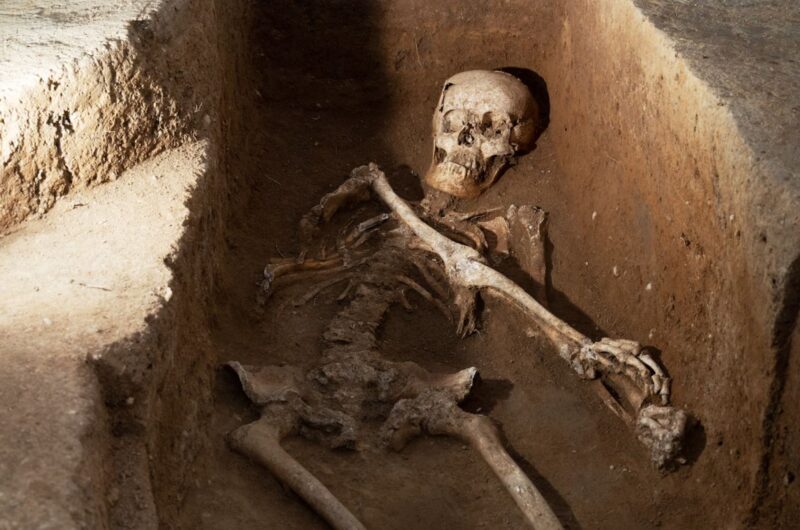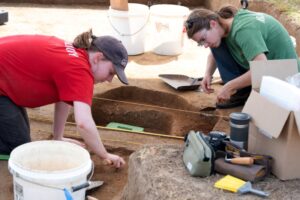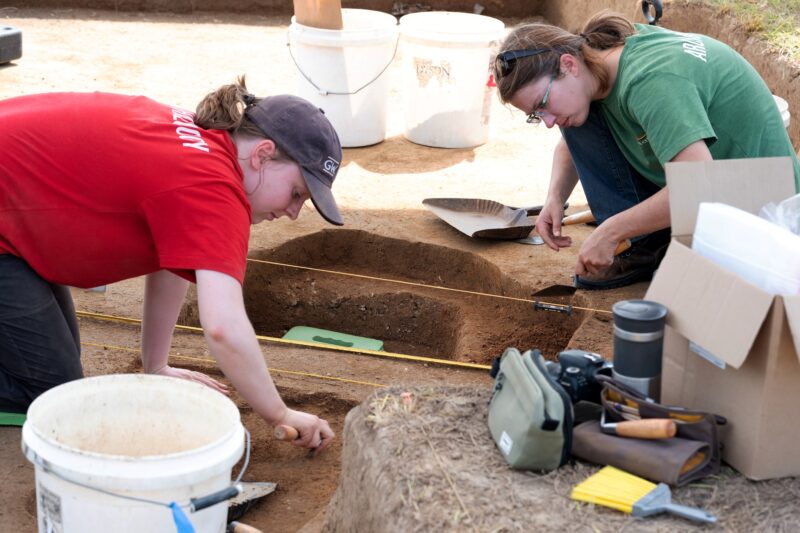The Historic St. Mary’s City (HSMC) Department of Research and Collections has uncovered the human remains of a young European man, believed to have been buried in the late 1630s. The remains were found approximately 30 feet outside of what once was St. Mary’s Fort.
This discovery may be one of the oldest colonial burials found in Maryland.
Curator of Biological Anthropology Douglas Owsley and Biological Anthropologist Kari Bruwelheide, both of the Smithsonian Institution, joined HSMC to begin studying the remains to learn more about the young man. It has been estimated that he was 15 – 16 years old at the time of his death.
The individual was directly buried in the ground without a coffin or burial shroud. His lack of formal burial could speak to not having family or people who cared for him in the colony. The life, death, and burial of this person can provide valuable insights into the early settlers of Maryland. Travis Parno, Acting Executive Director and Director of Research and Collections said, “The remarkable discovery of the remains of one of Maryland’s first colonizers is an important opportunity to learn about an individual who probably never appeared in the historical record.
Archaeology and forensic anthropology will help us bring life and voice to a young man from the earliest period of the Maryland colony, a time when written records were sparse.”
The remains will undergo cleaning and be transported to the Smithsonian Museum of Natural History for further analysis by Owlsley and Bruwelheide.
St. Mary’s Fort Site is currently closed to tours and public access due to ongoing removal of remains. There is no word on when the site will reopen at this time.
The palisaded St. Mary’s Fort was erected in 1634 by the first wave of European settlers who founded Maryland. The site, which spans an area approximately the size of a football field, is located in Historic St. Mary’s City (HSMC) in Southern Maryland
From The Washington Post “He was dumped in his grave with little ceremony. He had no coffin, no burial shroud and probably no family to mourn him. He had a broken right leg, and perhaps damaged ribs. His right arm was pulled awkwardly across his chest. And his left hand was clenched in a fist.
He had a square jaw, stood about 5 feet tall and was around 15 years old. And when experts opened his nearly 400-year-old grave last week, they realized they were looking at one of Maryland’s first European settlers — and one of the first colonists in what would become the United States.
Travis Parno, director of research and collections for Historic St. Mary’s City, said the young man could well have been aboard the Ark or the Dove, the ships that brought the first permanent White settlers to the shores of the St. Marys River in March 1634. Parno called the discovery “monumental.”

The remains of a 17th-century teenage boy at an excavation site in St. Mary’s County, Md. (Craig Hudson for The Washington Post)




